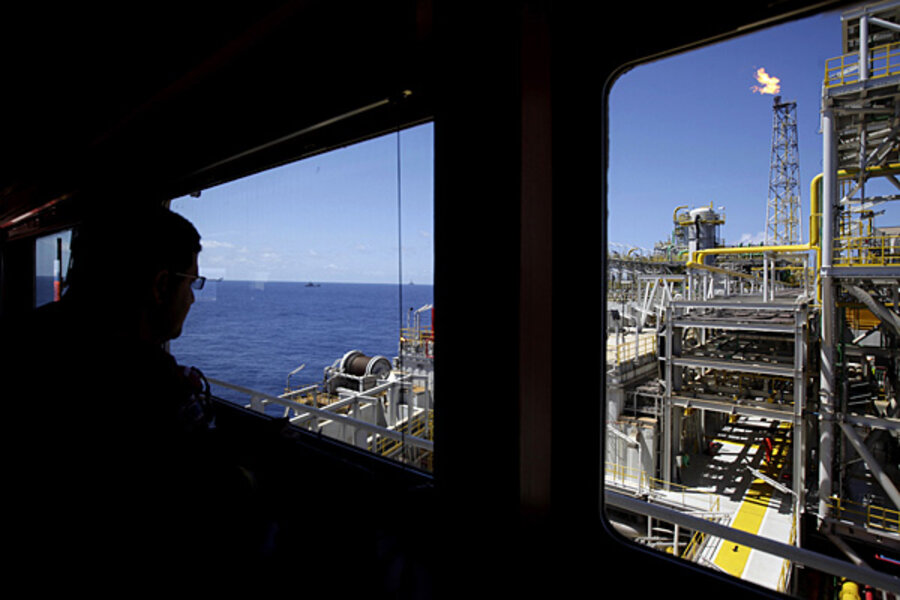Brazil and the future of oil in the Americas
Loading...
As bidders registered for the first oil rights auction in Brazil’s pre-salt last Wednesday, the reaction was overwhelmingly pessimistic. Headlines focused on lack of oil majors such as ExxonMobil and BP, and the small number of bidders; 11 as opposed to some 40 expected by the Brazilian government.
Indeed, attention in the run-up to Brazil’s inaugural pre-salt auction has been strikingly dissimilar to the tectonic-shifting announcements of the pre-salt several years ago. Yet with a mix of emerging market and European players, the list of bidders is perhaps a reflection of the nature of exploration and production in the Americas today.
Next month’s auction of blocks in the Libra field is not only the first pre-salt bid round but also the first auction under the revamped hydrocarbons law, which gives greater control over pre-salt development to state-owned Petrobras. The outcome could have far-reaching implications for the future of Brazil’s efforts to exploit the pre-salt reserves.
The registered bidders include three Chinese firms (CNOOC, CNPC and Sinopec in partnership with Repsol); India’s ONGV Videsh, Japan’s Mitsui & Co., Malaysia’s Petronas, and Colombia’s Ecopetrol, as well as familiar European outfits Shell, Petrogal, and Total. Nothing to sneeze at to be sure, and certainly no reason to give up on pre-salt’s promise.
The Libra prospect holds an estimated 8 – 12 billion barrels of oil, and Brazil’s hydrocarbons regulator, ANP, reckons the field could produce up to 1 million barrels per day at its peak. The country currently produces about 2 million barrels per day nationally, placing it just behind Venezuela as South America’s second largest crude oil producer. (Related article: Where's the Next Play for the Giants of Oil?)
But a recent report by consulting firm Wood MacKenzie cautioned potential bidders, citing the sheer expense of the development as well as the contract terms as reasons for concern. The firm estimated that to fully explore, appraise, and develop the Libra field would cost over $80 billion. Upfront costs were also cited as a possible deterrent, specifically the $6.5 billion signature bonus. Finally, the report argued that the 35 year contract may be insufficient to develop the technically complex reserves.
Other commentators cited competition from the United States, and the shale revolution, as a factor in investors’ decision making. With the output from US unconventional fields on a seemingly endless rise and oil prices trending down a bit, the exploitation of complex pre-salt reserves becomes more expensive, and the investment more risky.
The emphasis on deciphering the pre-salt risk begged the critical question: would companies agree with the Brazilian government’s position that the geology has been decoded. Earlier dry holes in the pre-salt serve as a reminder that it is not exactly a winning lottery ticket. Rather it is, after all, the oil and gas business.
There was also a concern about the apparent straitjacket that has been placed on Petrobras by requiring the national oil company to be the sole operator and own a minimum 30% stake in all pre-salt projects.
Long known as Petrosaurus for its less than agile ways, the evolution at the company since the 1997 Petroleum Law forced it to compete and partner with international firms has been remarkable. But under the new framework, the government is demanding an awful lot from their star.
The local content requirements of the regulatory model have also raised concerns – in the exploration phase 37% of equipment, goods, and services must be sourced domestically, a number that rises to 55% in the development phase. (Related article: Iran's Rouhani May Be Driving Oil Markets Now)
Despite this seemingly endless litany of concerns, the opportunity the pre-salt presents is not a trifling one. When the Tupi (now Lula) field was discovered in 2007, it set off exuberance in the international oil and gas business. And with good reason: the discovery was easily the largest in the hemisphere in several decades. Today, oil majors and participants in the international E&P milieu are increasingly hard pressed to find opportunities of the magnitude of the pre-salt.
Indeed, across Latin America there is no bidding underway that compares to the pre-salt. Not in much-heralded Colombia, nor in Ecuador, Venezuela, or Argentina, and not yet in Mexico.
But it is also clear that the upcoming bid round represents an important test for Brazil. Investors not only need the technical capacity and financial resources to compete but will be making a statement about the “above ground” challenges in Brazil. These include the production sharing agreements and local content rules, as well as complex tax laws and the political and institutional environment that has contributed to the stagnation and decline in Brazil’s crude production in recent years.
That said, this first step is still a promising one. Whether this new set of players can bring about a return to the pre-salt’s halcyon days, however, is far less clear.
Jeremy M. Martin is the director of the Energy Program at the Institute of the Americas at the University of California, San Diego. The institute is a nonprofit inter-American organization focused on economic development in the Western Hemisphere. Martin can be reached at jermartin@ucsd.edu and Twitter@jermartinioa.
Alexis Arthur is energy policy associate at the Institute of the Americas. She regularly writes and tweets on energy and natural resources policy in the U.S. and Latin America. On the side, Alexis writes about Australia-Latin America relations. She can be reached at alexis@iamericas.org or via Twitter@IOA_Energy
Original article: http://oilprice.com/Energy/Energy-General/Brazil-Pre-Salt-Reflects-Changing-Face-of-Energy-Investment.html







